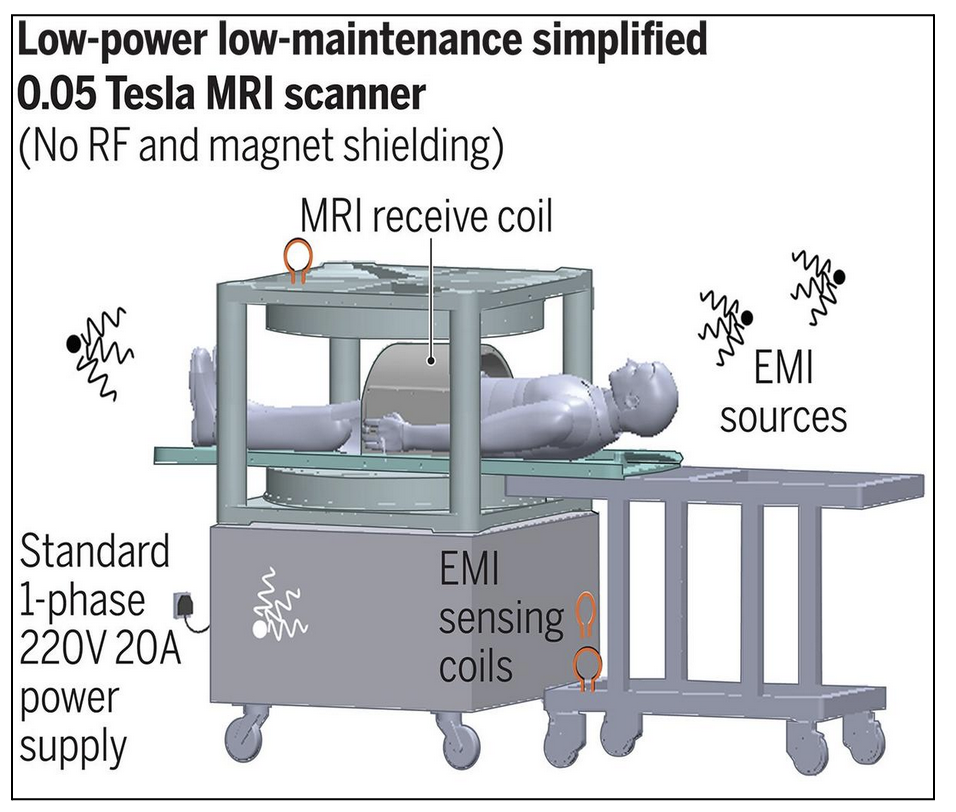News Excerpt:
Scientists have designed a magnetic resonance imaging (MRI) scanner that costs a fraction of existing machines, setting the stage for improving access to this widely used diagnostic tool.
|
What is magnetic resonance imaging?
|
Initial Problems Faced by High-Cost MRI Machines:
- High cost of the machine itself (9-13 crore rupees or $1.1-1.6 million).
- There are also additional infrastructure costs for shielded rooms, liquid helium cooling, and high power requirements.
- They are also inaccessible in low- and middle-income countries like India due to the high costs involved.
- Risk of metallic objects being pulled into the strong magnetic field.
- Claustrophobia experienced by some patients due to the enclosed scanning environment.
New Low cost MRI machine:
- To address the problems faced by conventional MRI machines, a team at the University of Hong Kong designed and built an MRI machine using low strength magnets and store-bought hardware.
- This simplified machine costs around $22,000, or about Rs 18.4 lakh.
- The machine uses 0.05 T magnets and doesn’t need a shielded room or helium coolant to operate.
- It can be plugged into standard wall-power outlets.

Advantages of the Low-Cost MRI Machine:
- Affordability: The low-cost machine is around 50-times cheaper than conventional 3T MRI machines costing between 9-13 crore rupees.
- No specialized infrastructure required: It does not need a shielded room, liquid helium cooling, or high power sources, reducing infrastructure costs and making it more accessible.
- Standard power supply: It can be plugged into standard wall-power outlets, eliminating the need for specialized power sources.
- Portability: Being lighter and more portable, it can increase accessibility in remote areas.
- Quieter operation: The machine is less noisy during operation, making it suitable for use in pediatric settings.
- Open scanning environment: It can be set up in an open scanning environment, alleviating claustrophobia that sometimes arises in conventional enclosed MRI machines.
- Reduced artifacts: The lower magnetic field strength may generate fewer artifacts due to metal implants or prosthetics in the final image.
- Safety: The reduced magnetic field strength may prevent accidents involving metallic objects being pulled into the machine.
Disadvantages of the Low-Cost MRI Machine:
- Lower image resolution: It can only detect tissue damage as small as 4 mm, compared to 1 mm for a more costly 1.5T scanner.
- Missing anatomical details: Some anatomical areas from which information needs to be extracted may not show up.
- Potentially lower image quality: While comparable to 3T machines with AI enhancement, the image quality may still be lower for certain applications.
Way Forward:
- While the low-cost MRI machine may not match the image quality and resolution of high-field MRI machines for certain applications, it offers several significant advantages in terms of affordability, accessibility, and safety.
- These advantages could "make a difference" by providing basic diagnostics in small centers and remote areas where high-cost MRI machines are currently unavailable.
- The low-cost machine could complement high-field scanners in radiology departments and be particularly useful in emergencies or for initial imaging before transferring patients to specialized centers.


